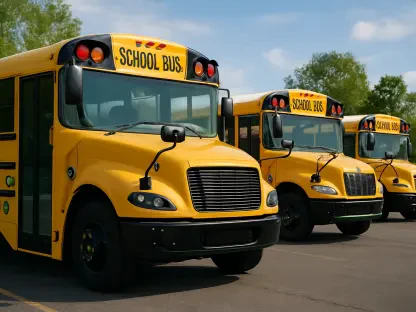In an era where public health faces unprecedented challenges, the debate over vaccine mandates in K-12 schools across the United States has taken center stage, stirring passionate arguments on both sides. As some state officials push to dismantle these long-standing requirements, and public trust in vaccinations appears to waver, the potential consequences for community safety loom large. The significance of maintaining these mandates cannot be overstated, as they serve as a critical barrier against preventable diseases that once plagued generations. This article delves into the compelling reasons for preserving vaccination policies in educational settings, exploring their role in safeguarding not just students but entire populations. From historical successes to current threats, the discussion will highlight why these measures remain indispensable. Amid rising skepticism and policy shifts, understanding the value of such mandates is essential for protecting the health of future generations and ensuring that schools remain safe environments for learning and growth.
Safeguarding Communities Through Immunization
The foundation of vaccine mandates in K-12 schools lies in their ability to protect entire communities from devastating illnesses. Health organizations like the National Association of School Nurses (NASN) emphasize that these policies significantly reduce the likelihood of outbreaks of diseases such as measles, mumps, and pertussis. By requiring high vaccination rates, schools create a protective shield through herd immunity, which is vital for individuals who cannot be vaccinated due to medical reasons, including those with compromised immune systems. This collective defense extends beyond classroom walls, safeguarding vulnerable populations like infants and the elderly in surrounding neighborhoods. The historical evidence is undeniable—vaccines have virtually eradicated once-rampant diseases like polio in many parts of the world. Undermining mandates risks unraveling these achievements, potentially exposing society to preventable yet deadly threats that could spread rapidly in densely populated school environments.
Moreover, the impact of vaccine mandates goes beyond immediate health benefits, reinforcing a culture of shared responsibility. Schools serve as microcosms of society, where policies like mandatory immunizations teach the importance of contributing to the greater good. Data from public health records consistently shows that regions with strict vaccination requirements experience lower rates of infectious diseases compared to areas with lax policies. The ripple effect is clear: when students are protected, teachers, staff, and families also benefit from reduced exposure. Critics may argue that personal choice should prevail, but the reality is that individual decisions can have widespread consequences in communal settings. Maintaining these mandates ensures that schools remain bastions of safety, preventing the reemergence of illnesses that modern medicine has worked tirelessly to control. Without such measures, the foundation of public health built over decades could weaken, leaving communities vulnerable to avoidable crises.
Confronting the Decline in Vaccination Coverage
Recent trends in vaccination coverage among young students paint a concerning picture for public health advocates. According to the Centers for Disease Control and Prevention (CDC), immunization rates among kindergarteners have declined noticeably for all reported vaccines during the current school year compared to previous data. This drop is particularly alarming when paired with documented increases in cases of preventable diseases like measles in multiple states earlier this year. Such incidents serve as a grim warning of the potential fallout when vaccination levels fall below critical thresholds. The NASN has repeatedly cautioned that relaxing or eliminating mandates could accelerate this downward spiral, leaving schools as breeding grounds for outbreaks. As misinformation about vaccine safety continues to proliferate, often amplified by social media, the urgency to uphold strict policies becomes even more pressing to counteract these dangerous narratives.
Beyond the raw numbers, the decline in vaccination rates reflects deeper societal challenges that threaten community well-being. Many parents, influenced by unfounded claims about vaccine risks, are opting for exemptions based on personal or religious beliefs, a trend that has grown in several states. This shift not only endangers individual children but also undermines the collective protection that high immunization rates provide. Public health experts stress that schools, as environments where children interact closely, are particularly susceptible to rapid disease transmission. Without mandates to ensure widespread compliance, the gaps in coverage could lead to clusters of unvaccinated students, creating hotspots for outbreaks. Addressing this issue requires more than policy enforcement; it demands a concerted effort to rebuild trust in scientific evidence. If left unchecked, this trend could reverse years of progress, exposing entire generations to risks that were once thought to be history.
Navigating State Policy Shifts and Inconsistencies
Across the nation, the landscape of vaccine mandates is becoming increasingly fragmented as state-level policies diverge from national recommendations. In Florida, for instance, proposals to eliminate vaccination requirements for school attendance have sparked fierce opposition from groups like the NASN and the Florida Association of School Nurses (FASN). These organizations argue that such moves represent a perilous regression in public health strategy, potentially setting a precedent for other states to follow. While the CDC provides standardized guidelines for immunizations, the authority to enforce school mandates ultimately rests with individual states, resulting in a patchwork of regulations. Some states have tightened rules, while others have loosened them, often allowing non-medical exemptions that further erode vaccination rates. This inconsistency poses a significant challenge to maintaining uniform protection across the country.
The implications of these policy divides extend far beyond state borders, affecting national health security. When one state weakens its mandates, the risk of disease spread increases, as travel and migration can quickly carry infections to other regions. Public health advocates warn that without a cohesive approach, the effectiveness of immunization programs could be severely compromised. In states with relaxed policies, the rise in exemptions—often driven by personal belief rather than medical necessity—has already contributed to localized outbreaks. Meanwhile, states with stricter rules demonstrate lower disease incidence, underscoring the value of mandates. The tension between state autonomy and collective health needs highlights a critical dilemmhow to balance individual rights with societal safety. As debates intensify, the need for federal guidance to harmonize policies becomes evident, ensuring that no community is left vulnerable due to regional discrepancies in vaccination enforcement.
Addressing Public Hesitancy and Building Trust
Shifting attitudes toward mandatory vaccinations reveal a growing divide in public opinion, posing a formidable obstacle for health advocates. A recent survey conducted this year by a prominent policy center found that only 52% of U.S. adults support state requirements for school immunizations, a sharp decline from 71% just a few years ago. This erosion of support is often linked to pervasive misinformation about vaccine safety, which has fueled hesitancy among parents and caregivers. Despite overwhelming scientific consensus on the benefits of immunizations, false narratives continue to gain traction, undermining trust in public health institutions. The challenge lies in countering these misconceptions with clear, evidence-based communication to restore confidence in policies that have proven their worth over decades.
Tackling vaccine hesitancy requires a multifaceted approach that goes beyond simply enforcing mandates. Educational campaigns must be prioritized to address common fears and myths, providing accessible information about how vaccines are developed, tested, and monitored for safety. Schools themselves can play a pivotal role by partnering with health organizations to host workshops or distribute factual resources to families. Additionally, engaging with community leaders and influencers can help amplify credible messages, reaching audiences that may be skeptical of official sources. Public health experts agree that while mandates are crucial, their effectiveness depends on public buy-in. Building that trust means acknowledging concerns, providing transparent answers, and emphasizing the shared benefits of immunization. Without such efforts, the foundation of community protection risks crumbling under the weight of doubt, leaving society exposed to preventable threats.
Reflecting on Past Successes and Future Steps
Looking back, the triumphs of vaccine mandates in K-12 schools stand as a testament to the power of collective action in public health. These policies curbed the spread of once-deadly diseases, transforming schools into safer spaces for learning and growth. The drastic reduction in illnesses like smallpox and polio showcased how sustained immunization efforts protected generations. Yet, as challenges mount with declining rates and shifting policies, the lessons from history remind us of the fragility of such progress. The commitment of organizations like the NASN to uphold these mandates highlights a resolve to prevent backsliding into an era of preventable suffering. Moving forward, the focus must shift to strengthening educational initiatives, aligning state policies with national standards, and investing in outreach to rebuild public trust. By fostering dialogue and prioritizing science-driven solutions, society can ensure that the legacy of vaccination continues to shield communities from harm.









